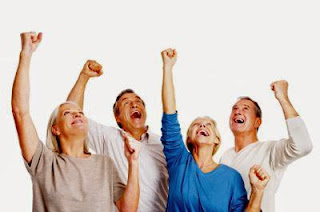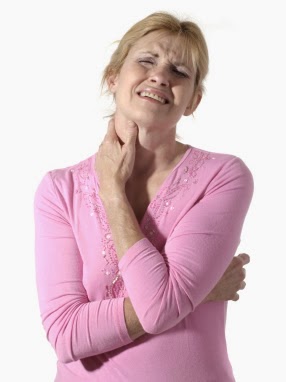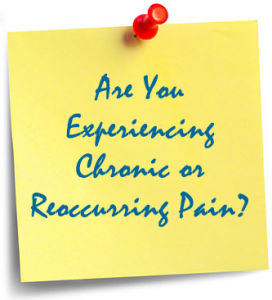Laser Therapy for the Treatment of Arthritic Knees: A Clinical Case Profile
Fred Kahn MD, FRCS (C), R. Liboro, F.Saraga, phD
"Laser Therapy should be considered as the treatment of choice in the management of pathologies of the knee."
The most common form of arthritis is
degenerative osteoarthritis, affecting approximately 80% of the population by the age of 65. A clinical study of 98 patients presenting with osteoarthritis of the knee at the Meditech Laser Rehabilitation Centre in Toronto, Ontario showed a significant improvement rate in excess of 92%. This article highlights some of the scientific and clinical research studying the effect of Laser Therapy on osteoarthritis.
Abstract
In a follow-up clinical study to our previously published 2006 SPIE conference proceeding, we analyzed a cross-section of patients treated for a variety of knee problems that present at our Meditech Laser Rehabilitation Clinics on a daily basis. Of the 98 patients with knee pathologies included in this study, 63% presented with degenerative osteoarthritis. On average 11 treatments, each 30-45 minutes in duration, were administered to each individual resulting in a significant improvement rate in excess of 92%. Laser Therapy is effective at both the cellular and systemic level, activating a variety of mechanisms including cartilaginous regeneration, DNA synthesis, improved microcirculation and has both an analgesic and anti-inflammatory effect.
1. Introduction
Arthritis results in the deterioration of the joint through the process of chronic inflammation. The most common form is degenerative osteoarthritis. This type of joint disease affects approximately 80% of the population by the age of 65. Osteoarthritis most commonly affects the hands, feet, spine and the large weight bearing joints such as the hips and knees. According to the Center for Disease Control, the lifetime risk of developing osteoarthritis of the knee has been estimated at 46%.

Low Intensity Laser Therapy (LILT), also known as photo-bio-modulation or laser
bio-stimulation, has been used successfully as a therapeutic approach to treat an extensive range of acute and chronic musculoskeletal conditions. Over the past 50 years, LILT research using wavelengths in the red to infrared range (600 - 900 nm) has been applied from in vitro cellular studies to in vivo animal and human studies. In particular, LILT for the treatment of degenerative osteoarthritis of the knees has been a topic of interest both in animal research and human, placebo-controlled, double-blind clinical trials.
A number of animal studies have measured the beneficial effect of LILT on cartilage formation [1], cartilaginous erosion [2], production of superoxide dismutase [2], stress protein levels [3] and chondrocyte proliferation [4]. These studies induce an osteoarthritic state in the knees of rats or rabbits by means of chemical injections into the intra-capsular space. LILT has been found to decelerate the arthritic process [1], regenerate articular cartilage [2], increase the levels of stress proteins, thereby improving the repair of cartilaginous erosion [3] and significantly increase the number of hondrocytes and the thickness of the articular cartilage [4].
Placebo-controlled clinical trials using LILT for the treatment of osteoarthritic knees have also reported the beneficial effects of Laser Therapy. A relatively recent meta-analysis of 36 randomized placebo-controlled trials found that LILT administered within optimal dosage levels, in an intensive 2-4 week treatment regimen, offered clinically relevant pain relief compared to placebo controls [5]. Another more recent clinical trial measured a significant decrease in pain, reduction of knee circumference, pressure sensitivity, extension, flexion and microcirculation as compared to the placebo group which was treated with a sham laser [6].
A recent study has shown that patients with osteoarthritic knees are unlikely to benefit from arthroscopic surgery [7]. Patients who received only conservative treatment (no surgery) did just as well as those who underwent arthroscopic surgery at the two year follow-up assessment [7]. On the other hand, clinical trials have indicated that Laser Therapy for osteoarthritis of the knees alleviates pain to a significant degree, along with the restoration of normal function and overall quality of life. The diagnosis in the majority of these patients was degenerative osteoarthritis of the knee(s) [8]. In addition to the retrospective analysis, we also highlight two case profiles which represent a classical case illustration and an advanced degenerative condition. Medical history, treatment regimen and progress are discussed in detail.
2.
Methodology
2.1
Laser Therapy Treatment for Knee Conditions
The BioFlex Laser Therapy system was used on all patients treated (Meditech International Inc., Toronto, Canada). The Figure 2.1 Three position placements for the red and infrared SLD arrays. a) Lateral, b) Medial and c) Popliteal. treatment regimen utilized in this study consisted of a three stage approach [9]. The stages were delivered using the super-luminous diode (SLD) arrays and laser probes as indicated below:
1) Red light (660 nm) using a flexible GaAlAs 180 diode array of SLDs (750 mW)
2) Infrared light (840 nm) using a flexible GaAlAs 180 diode array of SLDs (1500 mW)
3) Infrared laser probe (830 nm) using a single GaAlAs laser source focused on the basic pathology (75 - 200 mW)

In order to treat the entire circumference of the knee, each SLD array was utilized in three positions covering the medial and lateral compartments and the popliteal space (see Figure 2.1). The knee is best treated in a flexed position of 75°. For penetration with the laser probe to the posterior aspect of the patella and the patellar compartment, the knee was flexed to 90°.
In 70% of all patients treated, the protocols utilized were standard and customization was carried out in the additional 30%. Changes in treatment procedure were based on the clinical progress recorded on each individual patient visit. Primary objectives of the treatment were to achieve the following:
•The elimination of pain
•Substantial increase in mobility and range of motion of the joint.
•Cessation of the need for multiple medications (analgesics, NSAIDs and injections of cortisone, synvisc etc.)
•Improvement of the patient's overall status (normal sleep patterns and activity levels)
•To enable the patient to resume normal work and recreational functions
2.2
Retrospective Study
We had previously conducted a clinical study in which we analyzed the conditions and clinical outcomes of 1013 patients treated at the Meditech Laser Rehabilitation Centre [8]. Patients were grouped into one of five categories including degenerative conditions, repetitive stress injuries, trauma, sport injuries or other pathologies. Of the 1013 patients, 98 were treated for knee conditions. We reviewed the results obtained using laser therapy in these patients including type of pathology, age distribution, number of treatments and percent of overall improvement.
2.2
Clinic Case Profiles
Two patients treated at the Meditech Laser Rehabilitation Centre are reviewed. One represents a classic case profile of a patient presenting with Degenerative Osteoarthritis of the knee. This patient required 13 treatment sessions and only 3 alterations to the protocols. The second highlights a chronic case requiring a greater number of treatments comprising 35 sessions and had 12 protocol changes. For each patient, the diagnosis, medical history, physical examination, treatments and progress are described.
3.
Results
3.1
Retrospective Study
The results from a group of 98 patients treated for knee conditions consist of 53 males (n=53) and 45 females (n=45). These were analyzed retrospectively. The average age of the patients was 65 years. Sixty-three percent (63%) of these patients fell into the category of Degenerative Osteoarthritis and other diagnoses included synovitis, ligament or soft tissue injuries and Rheumatoid Arthritis. The percentage of patients presenting with varying knee conditions can be seen in Figure 3.1.
The average number of treatments required to resolve the various pathologies ranged from 4 to 11 with an overall average of 8.7 treatments per patient. The percentage of overall improvement was 93.8%. These statistics are noted in Table 3.1.
Examining the 62 patients diagnosed with Degenerative Osteoarthritis, we found that the average age of patients was 64.6 with an age distribution that peaked in the 61-70 age range (see Figure 3.2). The The average number of treatments needed to resolve the pain and inflammation associated with osteoarthritis of the knees was 11.0 and ranged from 2 to 35 treatments depending on the severity of the condition. Sixty percent (60%) of patients required 10 treatments or less to obtain at least an 85% overall improvement with regard to their symptoms and physical status (see Figure 3.3).

3.2
Clinical Case Profiles
The two case profiles highlighted represent a typical case and a more advanced degenerative knee condition that were treated at the Meditech Laser Rehabilitation Centre. For each patient, the diagnosis, medical history, physical examination, treatments and progress are provided.
Case Profile 1
DIAGNOSIS: Degenerative Osteoarthritis of the Knees
Medical History:

The patient is a 64-year-old female presenting with a 5-year history of severe bilateral pain of the knees. The patient had been engaged in many sports activities in her youth. Her main complaint was stiffness of the knees, difficulty getting up from the seated position, negotiating stairs and progressive limitation of weight-bearing. She had undergone consultations with a variety of healthcare professionals including the Family Physician, Chiropractor, Massage Therapist and Physiotherapist. She was utilizing Glucosamine and Chondroitin supplements daily. Her X-rays revealed degenerative change of both knees, more severe on the left, with tenderness predominantly over the medial
compartments.
Physical Examination:
Moderate hypertrophy of both knee joints was noted. On palpation, there was tri-compartmental tenderness most pronounced over the medial and patellar compartments. No instability was present. The right knee had a relatively normal range of motion, while there was a 10 degree lack of extension and a 15 degree lack of flexion of the left knee. The patient noted an increase of pain on passive flexion on the left. There was no evidence of instability.
Treatment
Low Intensity Laser Therapy treatments were initiated on alternate days for the first two weeks and subsequently every 3 days over the succeeding 3 weeks for a total of 13 treatments.
Progress
2 treatments - Edema over both knees resolved completely and tenderness minimal on palpation.
5 treatments - 0 tenderness; range of motion returned to normal; only minimal discomfort of the left knee.
9 treatments - 85% overall improvement. The patient was able to stand up from a seated position and walk up a flight of stairs without any symptoms noted.
13 treatments - Asymptomatic, fully functional and total absence of pain.
Case Profile 2
DIAGNOSIS:
Advanced Degenerative Osteoarthritis of the Left Knee with Acute Synovitis
Medical History:
The patient is a 75 year old female who presented with an acute exacerbation of chronic left knee pain. She described the pain as if her knee was being "stabbed with a knife", resulting in an inability to walk. She had previous consultations with an Orthopedic Surgeon and a Chiropractor. Several anti-inflammatories and analgesic prescriptions had been utilized. She took these medications over many years but these provided only transient relief. Her most recent X-ray revealed tri-compartmental osteoarthritic degeneration of the left knee and a joint effusion.
Physical Examination:
Marked hypertrophy and edema of the left knee was noted. Lack of
extension was 15 degrees and flexion was to 80 degrees only. Acute tenderness was noted primarily over the medial and to a lesser degree the patellar compartment. The patient demonstrated a mild limp on ambulation.
Treatment:
The patient initially had Low Intensity Laser Therapy treatments on alternating days over 4 weeks. This was gradually reduced to 3 times weekly for one month, then twice a week for an additional month, and finally maintenance therapy weekly for a total of 35 treatments.
Progress
4 TREATMENTS: The range of motion of the patient's left knee improved and lack of extension was reduced to only 12 degrees. She was able to flex her knee beyond 90 degrees. Pain with activity had decreased substantially.
10 TREATMENTS: The range of motion of the left knee continued to improve. The lack of extension was only 5 degrees and flexion was to 115 degrees. The sensation of pain continued to diminish.
14 TREATMENTS: The patient was relatively free of pain and only required the occasional Tylenol.
21 TREATMENTS: No tenderness on palpation. The patient reported that the pain had decreased by 80% and flexion was approaching normal. The patient still experienced some pain on full extension.
24 TREATMENTS - The clinical response to Laser Therapy appeared to have reached a plateau despite adjustment of frequency and duty cycle; the waveform was therefore modified from square to sine wave. Several treatments using sine wave proved to be successful in resolving the plateau and the patient was prescribed weekly sessions for several weeks as part of her maintenance therapy.
35 TREATMENTS - Complete resolution of edema and pain. Progressive increase in overall functional levels of the left knee which allowed the patient to carry out her normal daily activities without restriction and the use of analgesics. The right knee had been fully functional and asymptomatic since treatment session 8.
Conclusions
- Duration of treatment and correct positioning of the treatment arrays and laser probe are critical in the process of achieving an optimal therapeutic effect.
- Our experience indicates that the knee is best treated in a relatively flexed position for maximum penetration of the photon stream to the posterior aspect of the patella and the patellar compartment.
- Customization of protocols including duration, frequency, duty cycle and waveform facilitate the course of healing.
- In general, protocols are initiated at lower settings which may be increased as clinically indicated.
- Laser Therapy should be considered as the treatment of choice in the management of pathologies of the knee.
http://www.bioflexlaser.com/arthritis/
For more information, Andrew Subieta and the clinic staff can be reached at Osteoklinika Pain Management & Rehabilitation 905.660.8810. Also, please check our website www.osteoklinika.com for more information about Bio-Structural Integration™ .
References
1.Pfander, D., Jorgensen, B., Rohde, E., Bindig, U., Muller, G. and Scheller, "The
influence of laser irradiation of low-power density on an experimental cartilage damage in
rabbit knee-joints: an in vivo investigation considering macroscopic, histological and
immunohistochemical changes," Biomed Tech (Berl) 51(3), 131-138, 2006.
2.Cho, H.J., Lim, S.C., Kim, S.G., Kang, S.S., Choi, S.H., Cho, Y.S. and Bae, C.S.,
"Effect of low-level laser therapy on osteoarthropathy in rabbit," In Vivo 18(5), 585-591,
2004.
3.Lin, Y.S., Huang, M.H., Chai, C.Y. and Yang, R.C., "Effects if helium-neon laser on
stress protein and arthritic histopathology in experimental osteoarthritis," Am. J. Phys.
Med. Rehabil. 83(10), 758-765, 2004.
4.Bayat, M., Ansari, A., and Hekmat, H. "Effects of low-power helium-neon laser
irradiation on 13-week immobilized articular cartilage of rabbits," Indian J. Exp. Biol.
42(9), 866-870, 2004.
5.Bjordal, J.M., Johnson, M.I., Lopes-Martins, R.A., Bogen, B., Chow, R. and Ljunggren,
A.E., "Short-term efficacy of physical interventions in osteoarthritic knee pain. A
systematic review and meta-analysis of randomized placebo-controlled trials," BMC
Musculoskelet. Disord. 8, 51-64, 2007.
6.Hegedus, B., Viharos, L., Gervain, M. and Galfi, M., "The effect of low-level laser in
knee osteoarthritis: a double-blind, randomized, placebo-controlled trial," Photomed.
Laser Surg. 27(4), 577-584, 2009.
7.Kirkley, A., Birmingham, T.B., Litchfield, R.B., Giffin, J.R., Willits, K.R., Wong,
C.J., Feagan, B.G., Donner, A., Griffin, S.H., D'Ascanio, L.M., Pope, J.E. and Fowler,
P.J., "A randomized trial of arthroscopic surgery for osteoarthritis of the knee," N.
Engl. J. Med. 359(11), 1097-107, 2008.
8.Kahn, F., "Low intensity laser therapy: the clinical approach," Proc. of SPIE 6140,
61400F-1 - 61400F-11, 2006.
9.Kahn, F., "Low Intensity Laser Therapy", Meditech International Inc. Vol.1-3, 2008.
 Prolonged alcohol abuse can lead to inflammation of the nerves in the arms and legs, leading to symptoms such as tingling and pain. It is caused mainly by vitamin deficiency.
Prolonged alcohol abuse can lead to inflammation of the nerves in the arms and legs, leading to symptoms such as tingling and pain. It is caused mainly by vitamin deficiency.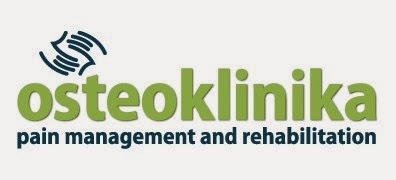










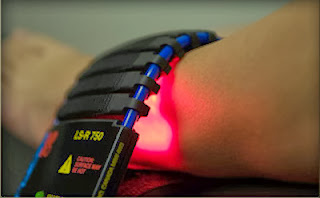



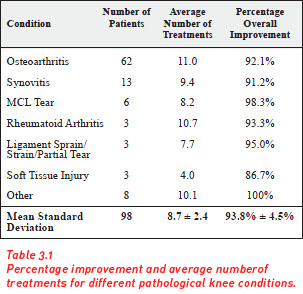




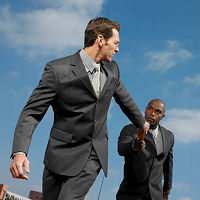
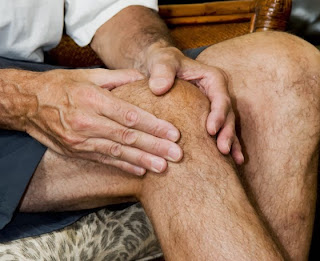

.jpg)

